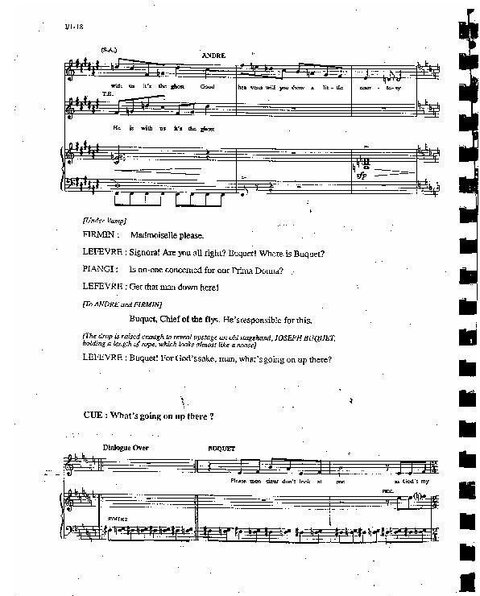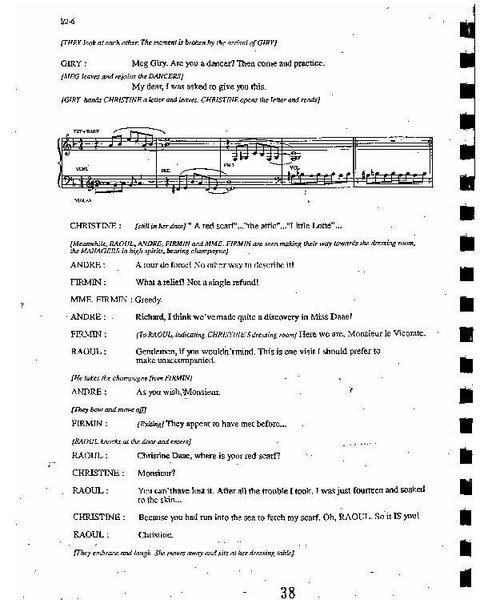Hi Everyone,
I'm putting together my calling script for this year's musical at school, but I'm having some problems doing it. A couple years ago, I started typing my scripts, to put the cues in through the computer (its easier to see), and this year is no exception to that. But, unlike past years, this year we will actually have cues that are tied to the score. I scanned the score already, so now I am trying to figure out how to build the two into one document that will work for me. Has anyone ever done this before? I know that for the full songs, I could theoretically remove the "text" of the song and just insert the score and follow that, but what about during scenes with underscore, where I need to be following the score (to follow vamps and repeats, for cue purposes) and the text at the same? If anyone has any ideas, please let me know!!
Thanks in advance!
I'm putting together my calling script for this year's musical at school, but I'm having some problems doing it. A couple years ago, I started typing my scripts, to put the cues in through the computer (its easier to see), and this year is no exception to that. But, unlike past years, this year we will actually have cues that are tied to the score. I scanned the score already, so now I am trying to figure out how to build the two into one document that will work for me. Has anyone ever done this before? I know that for the full songs, I could theoretically remove the "text" of the song and just insert the score and follow that, but what about during scenes with underscore, where I need to be following the score (to follow vamps and repeats, for cue purposes) and the text at the same? If anyone has any ideas, please let me know!!
Thanks in advance!




